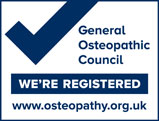A balanced approach
Alan Nevies and his colleagues at northlondonosteopaths are very happy to announce Spring is round the corner. As February turns into March we all get a spring in our step and hopefully think of getting more active in the longer days and warmer weather.
- In view of this It is important to remember balance enhancing exercises especially as we get older. This is because the positions and movements come less naturally to us and we become more afraid of falling, which makes us more tense and more likely to fall. We retreat into a “safe zone” with our movements and loose confidence in our ability to balance. We are often exhorted to do cardio vascular exercise, or stretching exercise but rarely are we reminded about the importance of balancing. We need to put the spotlight on balance and focus on it.
The advantages of good balance include
- Prevention of falls
- Building stability in lower limbs, trunk, improving core strength, hip, pelvic, knee and ankle stability.
Alan Nevies and his colleagues at northlondonosteopaths encourage peri and post menopausal women to build up their balance strength as women often loose bone density, muscle mass and strength due to decline in oestrogen.
Getting older does not necessarily mean getting weaker. By adopting a daily regime of balancing exercises akin to brushing our teeth we can help ourselves to stay strong and function better. Balancing exercises can even be performed whilst brushing our teeth!
How can Alan Nevies and his colleagues at northlondonosteopathy help with balance training?
- Since proprioception comes from the feet, Alan Nevies and his colleagues at northlondonosteopaths can show you specific exercises to build foot strength and stability.
- Wobble boards can be helpful in enhancing balance and Alan Nevies and his colleagues can give you their opinion on whether and which board to buy.
- Since balance is controlled by the middle ear, Alan Nevies and his colleagues can make sure neck and muscles in the upper thoracic area are not tight and allow for easy movement.
Just a few practical steps to help you keep steady with a spring in your step!


